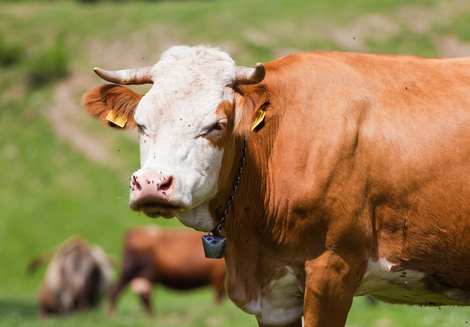Food-Producing Animals
With the global population expanding at its current rate it is crucial to ensure a safe food supply which is both secure and sustainable.
The animal health industry is a key player in this challenge and strives to develop advanced solutions in the interests of a safe, secure and sustainable food supply. Animal health products contribute to improving and maintaining the health and welfare of animals in terms of disease prevention, treatment and control.
See also: Contribution to agricultural production
Why do food-producing animals need medicines?
Like people, animals get sick and need medicines too.
By preventing or treating diseases, veterinary medicines contribute to improving and maintaining animal health and welfare, as well as public health. Stringently regulated and licenced, animal health products serve as tools for veterinarians and farmers to safeguard animal health on farms as part of an overall animal health plan. Healthy animals enable farmers to produce and supply food in a sustainable way.
Thanks to the use of veterinary medicines Europe has been successful in preventing and managing animal diseases such as bluetongue, bovine mastitis, circovirus, foot-and-mouth disease, and salmonella, which just years ago posed serious threats to animal health, food safety and public health.
See our fact sheet on Why Food-producing Animals Need Medicines for more detail.
What are food-producing animals?
Food-producing animals in Europe include:
- Cattle
- Sheep and goats
- Pigs
- Poultry (e.g. chickens, ducks and turkeys)
- Bees
- Fish
'Livestock' is also used as a synonym of 'food-producing animal'.
Food animals provide a wide range of food products including:
- Milk and dairy products
- Meat
- Seafood
- Eggs
- Honey
They also provide us with other essential by-products such as wool and leather.
How many are there?
We have a large amount of food-producing animals as agriculture remains a major activity in the EU with around half of the land being farmed. With combined imports and exports of EUR 226 billion in 2014, the EU is the world's foremost trader in agri-food products, benefiting producers and consumers within and outside the EU.
Source: Eurostat 2014
Agriculture provides almost 12 million jobs in the EU, representing more than 5% of the EU's workforce.
For more info on the EU's agriculture market visit the European Commission DG Agriculture website.

